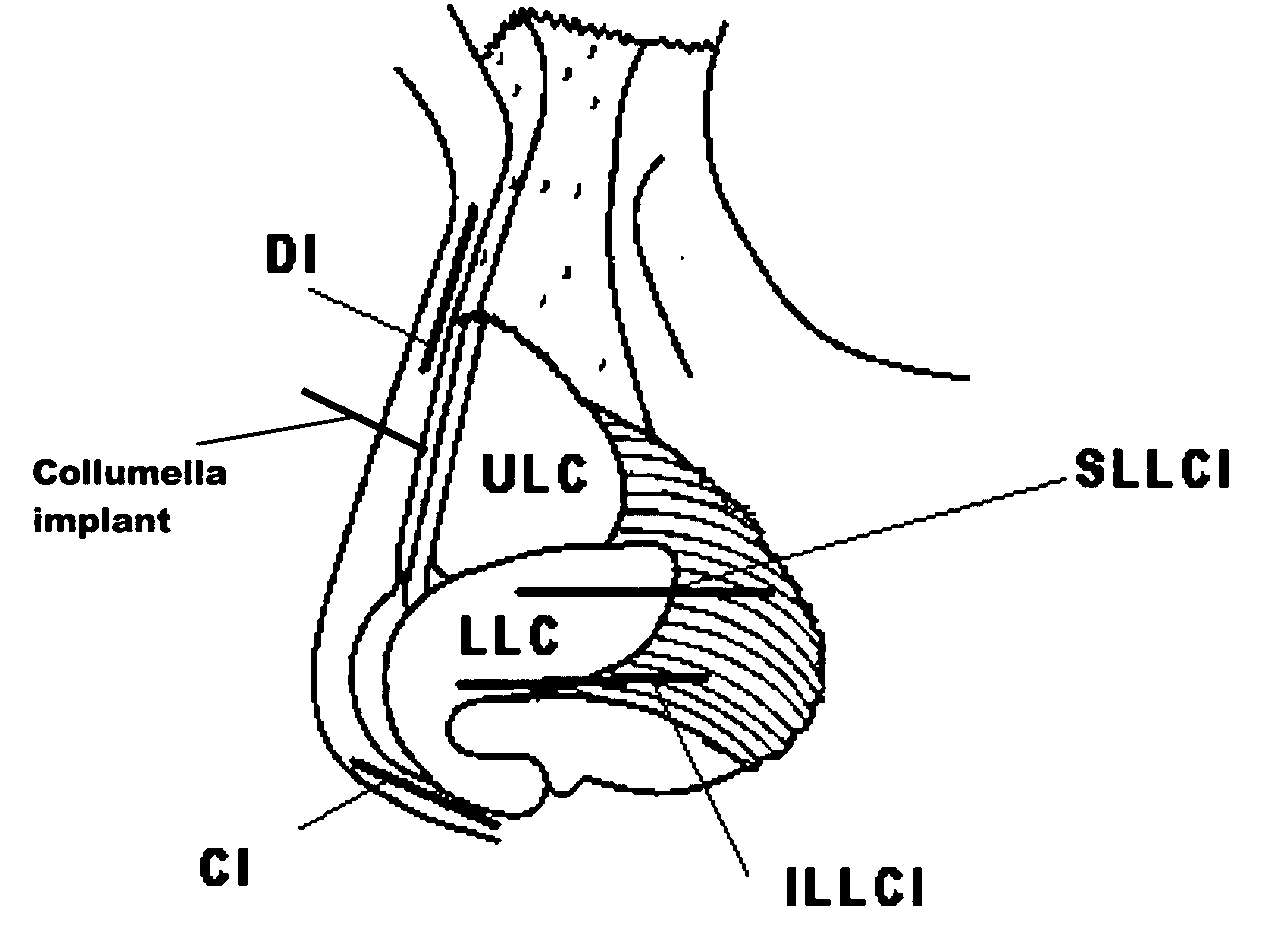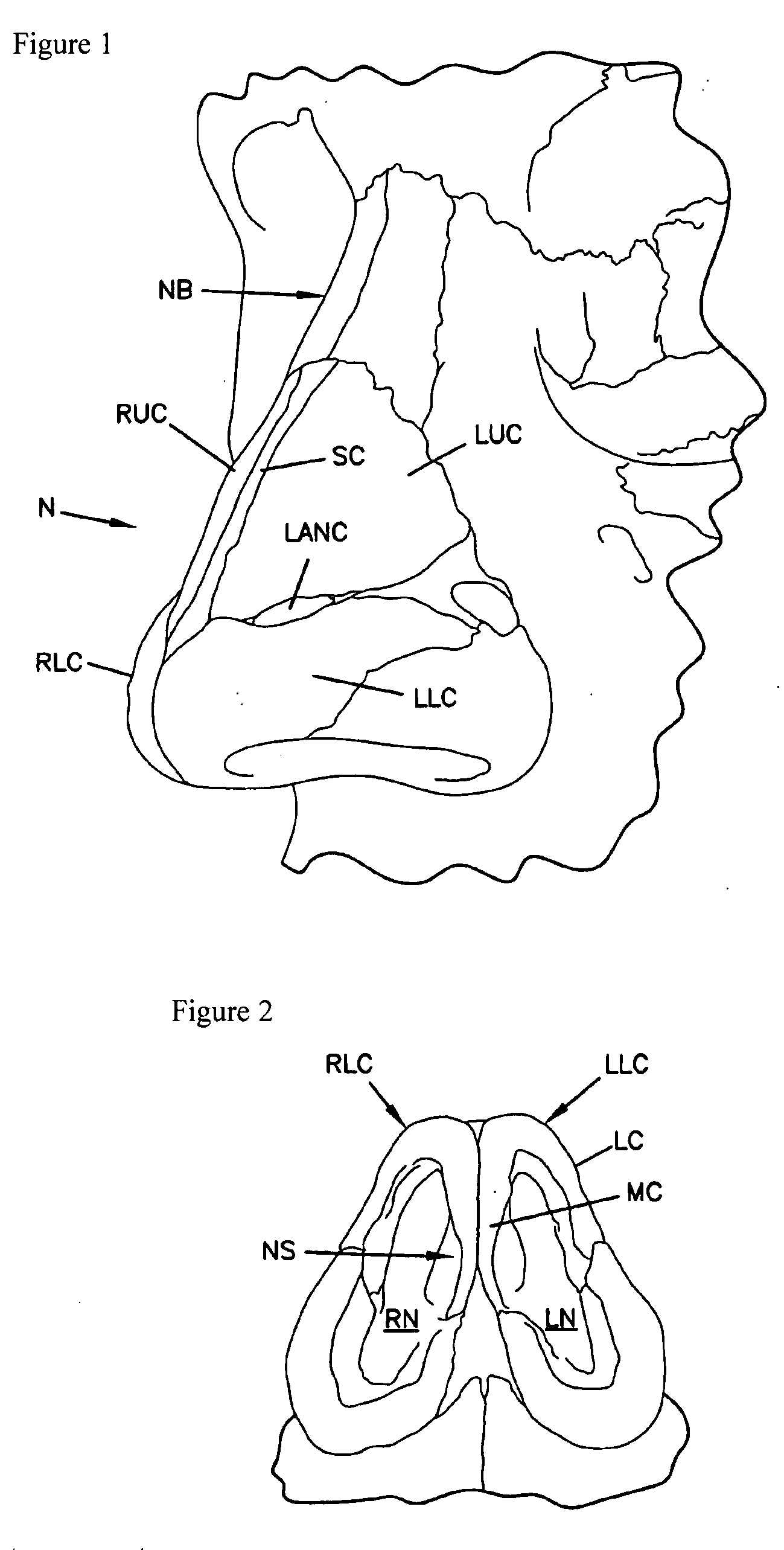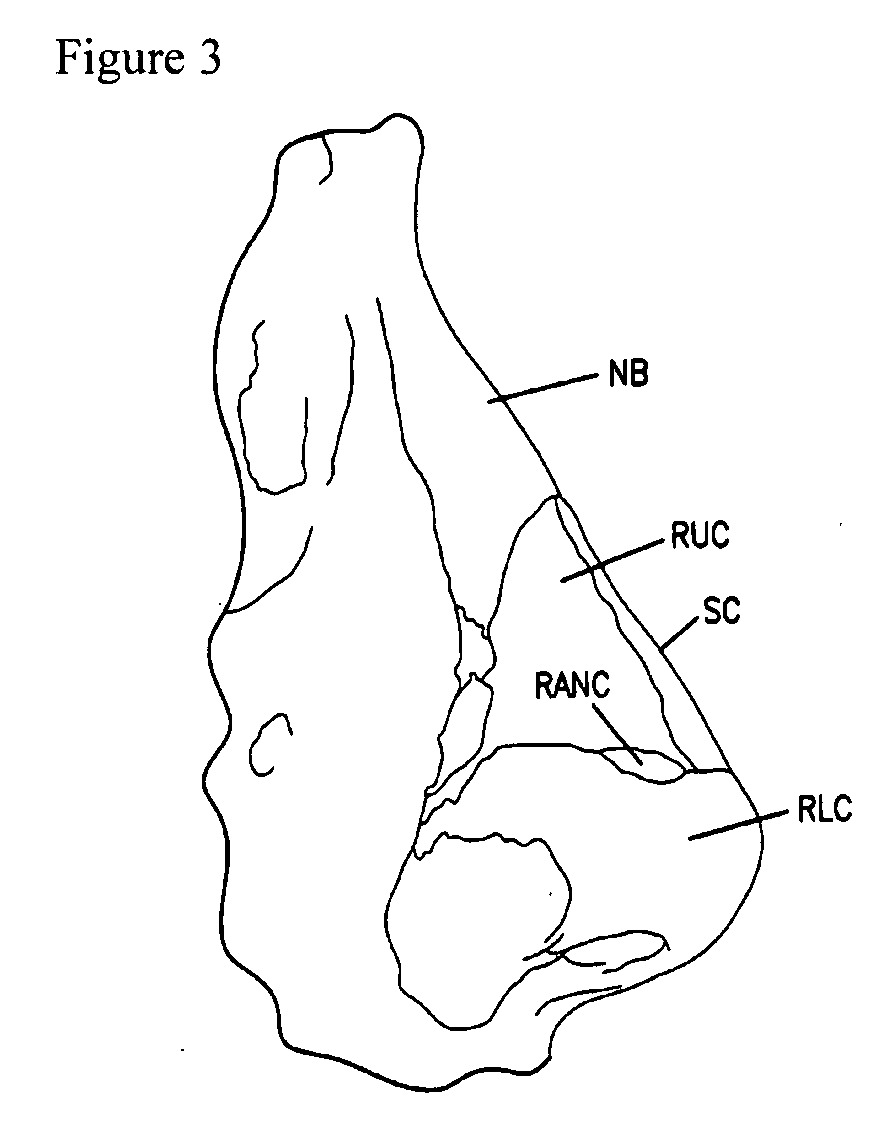Nasal implant introduced through a non-surgical injection technique
a non-surgical, nasal implant technology, applied in the field of nasal implants, can solve the problems of nasal airway obstruction, difficulty in respiration and snoring, collapse of one or both internal nasals, etc., to improve the structural strength of the surrounding tissue, prevent tissue from collapsing, and strengthen the lateral nasal cartilag
- Summary
- Abstract
- Description
- Claims
- Application Information
AI Technical Summary
Benefits of technology
Problems solved by technology
Method used
Image
Examples
examples
[0109]Three working examples of useful implants have been produced for insertion into the nose.
[0110]The first is a 1.4 cm long, 0.8 mm thick titanium rod that is incorporated in a 16 gauge injection needle. This is designed for use into the lateral nasal wall which supports the external valve. The implant is injected in a fashion similar to the technique illustrated in FIG. 14. The currently preferred method of introduction is transmucosaly (from inside the vestibule of the nose). The implant is placed between the lower lateral cartilage and the nasal mucosa, and extends over the maxillary bone. When placed, it appears similar to the implant I1 shown in FIG. 8. One implant is placed for each side of the nose, if bilateral valve collapse is present. After implantation, the shape of the implant can be adjusted by molding the shape of the titanium implant.
[0111]In another example, a 1.8 cm long and 1 mm thick rod manufactured from a 85:15 poly (L-lactide-co-glycolide) polymer has been...
PUM
 Login to View More
Login to View More Abstract
Description
Claims
Application Information
 Login to View More
Login to View More - R&D
- Intellectual Property
- Life Sciences
- Materials
- Tech Scout
- Unparalleled Data Quality
- Higher Quality Content
- 60% Fewer Hallucinations
Browse by: Latest US Patents, China's latest patents, Technical Efficacy Thesaurus, Application Domain, Technology Topic, Popular Technical Reports.
© 2025 PatSnap. All rights reserved.Legal|Privacy policy|Modern Slavery Act Transparency Statement|Sitemap|About US| Contact US: help@patsnap.com



